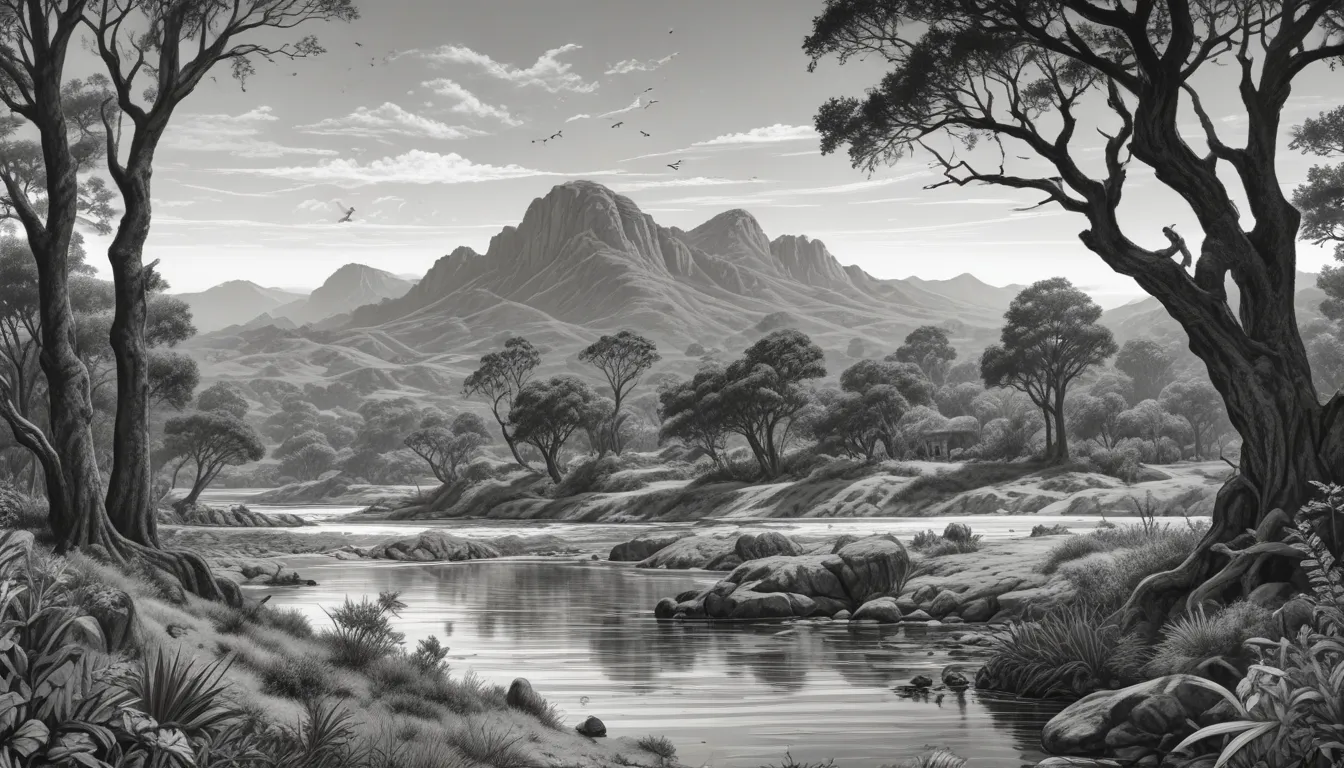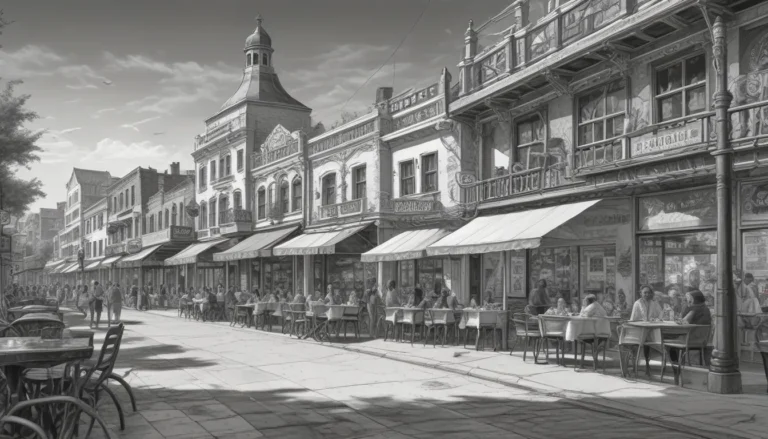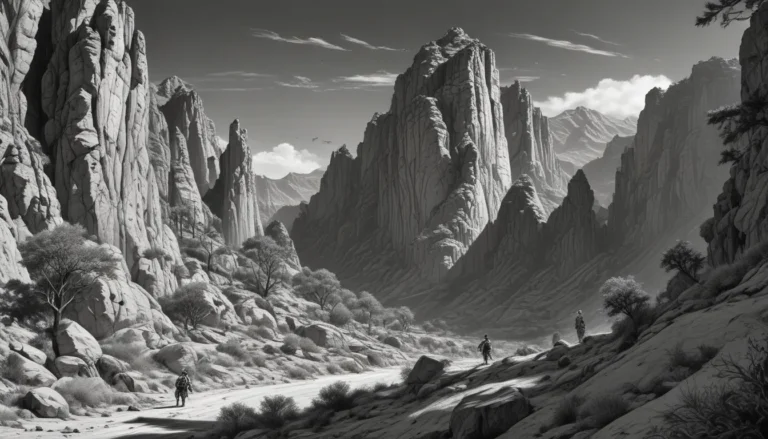The images in our articles are for illustrative purposes only and may not exactly match the content. They are intended to capture your interest and complement the text, not to replace it.
Are you captivated by the beauty of nature? Do you find solace in the presence of wildlife? If so, Santa Barbara, California, is the perfect destination for you. With its diverse habitats and stunning landscapes, Santa Barbara is a haven for nature enthusiasts and conservation efforts. From the majestic Channel Islands National Park to the serene Andree Clark Bird Refuge, the region’s natural reserves offer a captivating glimpse into the area’s rich biodiversity. In this article, we will delve into 12 fascinating facts about the local wildlife and natural reserves in Santa Barbara, shedding light on the captivating ecosystems that contribute to the area’s allure.
Key Takeaways:
- Santa Barbara, California is a wildlife wonderland with diverse habitats and over 2,000 unique plant and animal species, making it a haven for nature enthusiasts and conservation efforts.
- From the stunning coastline to the picturesque mountains, Santa Barbara’s natural landscapes are home to a rich variety of flora and fauna, providing vital sanctuaries for local wildlife.
Discover Santa Barbara’s Diverse and Captivating Wildlife
The region’s natural reserves and parks are teeming with a wide array of fascinating creatures and breathtaking landscapes. Here are 12 facts about local wildlife and natural reserves in Santa Barbara, California that showcase the area’s rich biodiversity and stunning conservation efforts.
Channel Islands National Park: A Haven for Marine and Terrestrial Wildlife
Located off the coast of Santa Barbara, the Channel Islands National Park comprises five remarkable islands home to over 2,000 plant and animal species. From the adorable island fox to the majestic blue whale, the park offers a unique opportunity to witness diverse wildlife in their natural habitat.
Santa Barbara Botanic Garden: Preserving California’s Native Plants
Dedicated to preserving California’s native plants and ecosystems, the Santa Barbara Botanic Garden boasts a stunning collection of over 1,000 species of indigenous plants. Visitors can explore diverse landscapes, including serene meadows, tranquil woodlands, and vibrant wildflower displays.
Douglas Family Preserve: A Sanctuary for Local Wildlife
Spanning 70 acres along the stunning coastline, the Douglas Family Preserve provides a sanctuary for a variety of bird species, including the iconic red-tailed hawk and the western snowy plover.
Carpinteria Salt Marsh Reserve: A Vital Coastal Ecosystem
Supporting an abundance of wildlife, the Carpinteria Salt Marsh Reserve is home to numerous bird species, fish, invertebrates, and plant life. The reserve plays a crucial role in maintaining the health of the local environment.
Elings Park: Diverse Habitats for Birdwatching
Encompassing grassy meadows, oak woodlands, and serene ponds, Elings Park serves as a sanctuary for numerous bird species. With its panoramic vistas and peaceful ambiance, Elings Park offers a tranquil escape into nature.
Santa Barbara Museum of Natural History: A Journey Through Wildlife
Housing an extensive collection of local wildlife specimens and exhibits, the museum offers a captivating journey through the region’s natural history, providing insights into the area’s rich wildlife heritage.
Andree Clark Bird Refuge: A Sanctuary for Migratory Birds
Providing a vital sanctuary for migratory birds and native wildlife, the Andree Clark Bird Refuge is home to a diverse array of waterfowl, creating a haven for avian enthusiasts and nature lovers.
More Mesa Preserve: Beauty of Coastal Open Spaces
Showcasing Santa Barbara’s coastal open spaces and diverse ecosystems, the More Mesa Preserve is home to a rich tapestry of native plants and wildlife, making it a cherished natural gem within the community.
Conclusion
Exploring the local wildlife and natural reserves in Santa Barbara, California, offers a fascinating journey through diverse ecosystems and habitats. Whether you’re a nature enthusiast, hiker, or wildlife photographer, Santa Barbara’s rich biodiversity and stunning landscapes provide endless opportunities for exploration and discovery. By understanding and appreciating the unique flora and fauna of this region, we can all contribute to the preservation of these invaluable natural resources for future generations to enjoy.
FAQs
Q: What wildlife can be found in Santa Barbara, California?
A: Santa Barbara is home to a diverse range of wildlife, including sea lions, dolphins, monarch butterflies, and various bird species.
Q: Are there any guided tours available for exploring the natural reserves in Santa Barbara?
A: Yes, several tour companies offer guided excursions to explore the local wildlife and natural reserves, providing valuable insights into the region’s ecology and conservation efforts.
Q: What are the best times of the year to visit Santa Barbara for wildlife observation?
A: The fall and spring seasons are ideal for wildlife observation in Santa Barbara, as many species are active during these times and the weather is generally pleasant for outdoor activities.
Q: How can visitors contribute to the conservation of natural reserves in Santa Barbara?
A: Visitors can contribute to conservation efforts by respecting wildlife habitats, following designated trails, and supporting local conservation organizations through donations or volunteer work.
Q: Are there any endangered species that can be found in Santa Barbara’s natural reserves?
A: Yes, several endangered species, such as the California condor and steelhead trout, inhabit the natural reserves in Santa Barbara, highlighting the importance of conservation initiatives in the region.
In conclusion, Santa Barbara’s wildlife and natural reserves are a treasure trove of biodiversity and conservation efforts. Explore, observe, and appreciate the beauty of nature in this coastal paradise, and contribute to the preservation of these invaluable resources for future generations.






